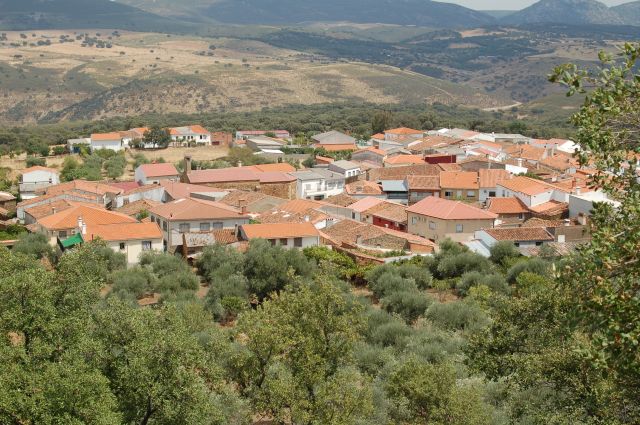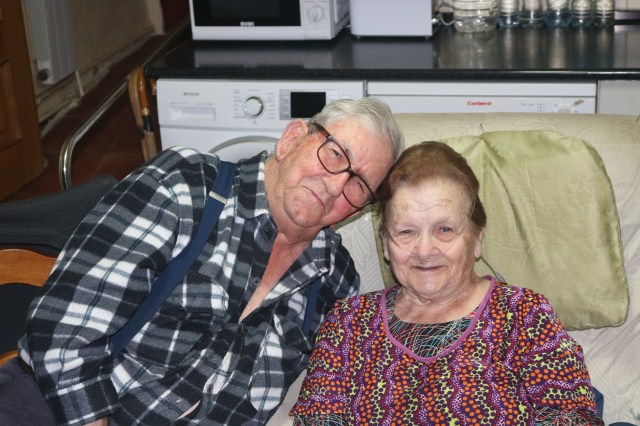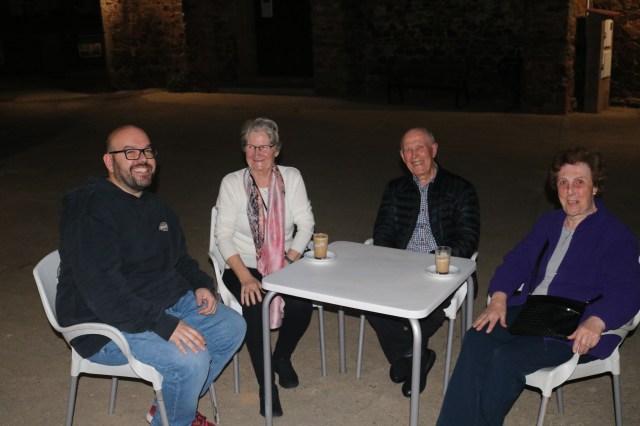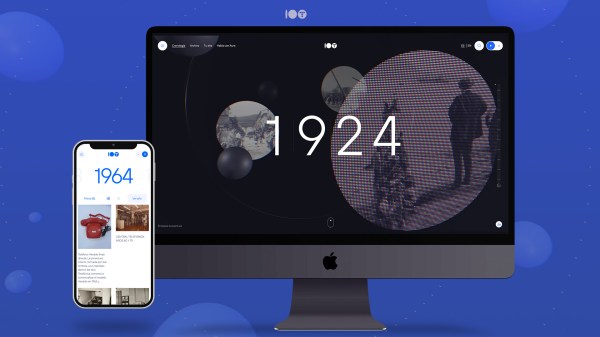Telefónica is 100 years old. In this time we have connected many people from all over the world. In the big cities, the arrival of the telephone has not gone unnoticed, but in empty Spain it was undoubtedly a great milestone as it would change the lives of its inhabitants forever.
Campillo de Deleitosa

“Campillo”, as its inhabitants refer to the village, is currently the second municipality in Cáceres with the lowest population census according to the INE (National Statistics Institute), and the third in Extremadura. It is located in the region of Villuercas and is part of the UNESCO World Geopark Villuercas Ibores Jara. If you would like to find out more about its natural surroundings and its Roman aqueduct, click here.
This municipality, which today has only 83 registered inhabitants, had more than 600 in 1950. The population emigrated to large cities such as Madrid and Vitoria, but also to other countries such as France and Argentina. Part of the population that emigrated is returning to live in the village after retirement for long periods, or even permanently.
Against this background, the telephone was (and still is today) essential to be able to connect with people who were and are far away.
Aurelio, 103 years of wisdom

Ovidio is 82 years old and his father Aurelio is 103 years old. He does not remember when the telephone arrived in Campillo, he only thinks that he was already married. What he does remember is that they put the telephone in the village with the money they got from leasing the land, i.e. the villagers themselves were the ones who paid for the installation of the telephone. The telephone was in the house of “tío Román”. He had the switchboard, and if you wanted to call, you had to go there.
Eusebio and Alfonsa, among the first “telephonists” in Campillo
Eusebio is 91 years old and Alfonsa is 86 years old. They both remember that there was a telephone in the transformer, which was the first telephone in the village and was used to communicate between the employees of the electricity company. Then came the first telephone booth, which they were in charge of. In this place there was “a piece of junk that hung there on the wall, you dialed the number of your friend or your friend, or whoever it was, and you talked for a while… and according to what you talked about there, you had to pay what was on the step counter. There were those who had a very hard face and if they didn’t mark well, they would erase the steps“. The couple tells us that there was a “trick” to it. There were people who “made a mistake” when marking, and then they hit it and erased the steps. They commented to me with laughter.

We also remembered together which people they called the most. Eusebio communicated a lot by telephone with Andrés Pérez, who had a materials warehouse, as he was a bricklayer and needed his products. He thinks he remembers that it was around the 70s or 80s… but he doesn’t know for sure. Alfonsa, his wife, was called from France to talk to people in the village. In fact, many times, Alfonsa had to go and pick up the person they were calling, or there were people waiting in the phone booth, because a relative was going to call them at a certain time.
As part of the interview, I like to tell them that nowadays instant messaging, such as WhatsApp or email, is the most commonly used means of communication. They do not hesitate to remind me of the importance of being able to “listen to the voice of the person who is calling you, it is not the same as reading it in a message, or in a letter“. To Alfonsa, for example, the act of writing a letter seemed to show a special interest in the person, because of the time invested in writing and sending it.
In the 1950s they already had a telephone in the barracks where Eusebio did his military service, but they were hardly allowed to use it, so they had to communicate with their loved ones by letter.
Carmen, Enrique and Marta: “The telephone gave us life”.
Carmen (80) and Enrique (83) have been married for 60 years. Marta (82) is their friend and over a cup of coffee they tell me about their experience.

Enrique worked laying the telephone wires that came to the village, while he was working in a power station. He was 17 years old at the time. He tells me that “he was laying the power line from Guadalupe to Bohonal. And while he was on holiday they called him. There was a splicer who was the only official there, and they laid the wire. The poles were already in place, and as Enrique knew how to climb with the climbers, they hired him”. They laid the wire from the Mesas crossroads to the Campillo switchboard, which was run by Francisca Porras Rivero.
Together we remember the first calls they made around the end of the 50s, but they tell me that it wasn’t until 1957 that the telephone arrived in Campillo: “We would ask for a conference at the switchboard at such and such a number, and it was very important for us, as the letters used to take a month to arrive“.
Paca, the first telephone operator in Campillo
Paca was the first telephone operator there. They remember how she worked 24 hours a day and was always on duty. She was the one who set up the conferences. Although the first telephone as such was actually installed in the village in 1917, before that it was operated via the high-voltage lines of the power station.
But how was this transmission made possible? The power stations asked the villages for permission to introduce the current to the cables, because before, there was no light during the day, only at night. This process was used to give a message or, for example, “to call another village to ask at the pharmacy if they had a medicine. If they said yes, you took the horse and went to get it“. As the cable had no current, two wires were connected to a dynamo and it was called.
Marta was a teacher and lived outside the village for many years. Carmen and Enrique were also away for a long time. They remember, with longing, having been away for more than three hours to be able to talk to each other.
New forms of communication
The current way of communicating, through instant messaging, does not convince them too much, although they think it is a quick way to talk to each other. They all prefer to “listen to the voice“. Enrique points out that for him “WhatsApp is a highway that allows you to travel a lot and learn a lot of things“.
Carmen says that when her father got the phone, he cried with happiness because he could communicate with his family from France in a simpler way. This advance, for them, “was (and is) the way to bring family and friends closer together”. If they heard their news by word of mouth, they knew for sure that they were well, whereas through letters it was more difficult to believe.
Today Carmen talks to her children and Marta to her sister every day. These calls are essential for her to know if they are well and to stay connected with them.
(Many thanks to everyone who made this article possible).









